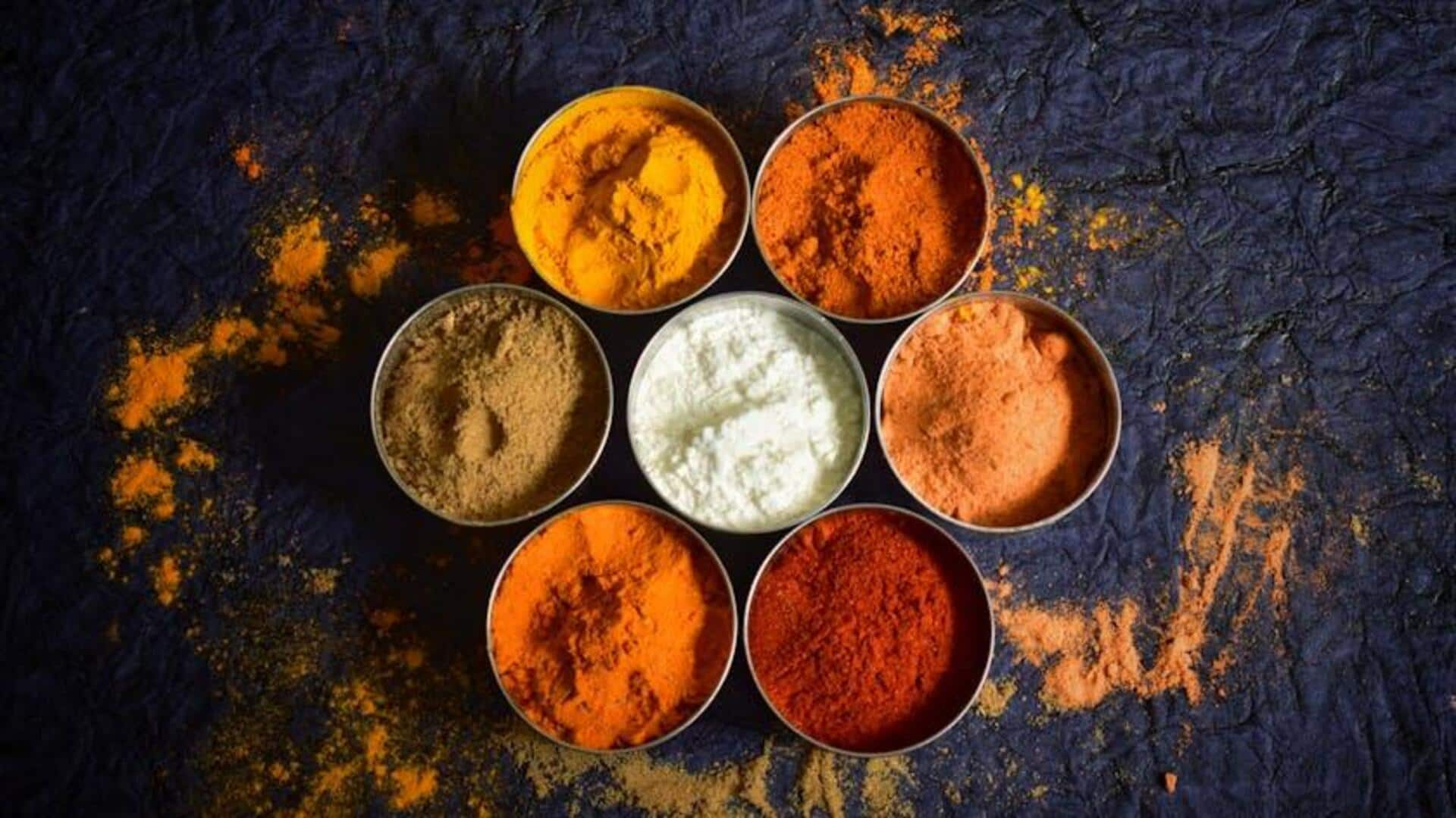
Spice up your daily meals with these 5 masalas
What's the story
Spice blends are an integral part of most cuisines, providing an easy way to make dishes flavorful and aromatic. They can easily turn a few basic ingredients into a scrumptious meal, which is probably why they have become a kitchen staple across the globe. Here, we take a look at five masala spice blends that can inspire your daily cooking.
Warm mix
Garam masala: A warm blend
Garam masala is a go-to spice blend for adding warmth and aroma to any dish. Usually made with cinnamon, cardamom, cloves, cumin, and coriander, this blend lends depth to curries and stews. It is usually added near the end of cooking to retain its aroma. Garam masala can also be sprinkled over roasted vegetables or mixed into soups for enhanced flavor.
Tangy mix
Chaat masala: Tangy twist
Chaat masala is famous for debatably the best taste—tangy and a little spicy. This blend makes snacks and salads a lot better. It typically consists of dried mango powder (amchur), black salt, cumin seeds, coriander seeds, dried ginger powder, black peppercorns, asafoetida (hing), and chili powder. Its unique flavor lends itself beautifully for sprinkling over fruit salads or giving a zing to yogurt-based dips.
Five-spice mix
Panch phoron: The five-spice blend
Panch phoron is a classic five-spice blend from Eastern India. It consists of equal parts fenugreek seed, nigella seed (kalonji), cumin seed, black mustard seed (rai), and fennel seed (saunf). This whole spice mix is usually added while tempering hot oil to be followed by vegetables or lentils. It gives an earthy aroma with a hint of sweetness from fennel seeds.
South Indian mix
Sambar powder: South Indian staple
Sambar powder is a must-have in South Indian cuisine for making sambar—a lentil-based vegetable stew accompanying rice or dosa. The mix typically has coriander seeds; red chilies; curry leaves; fenugreek seeds; mustard seeds; turmeric powder; asafoetida (hing); black peppercorns; split chickpeas (chana dal); split pigeon peas (toor dal); urad dal; and rice grains roasted together until fragrant and ground into fine powder-form.
North African mix
Ras el hanout: North African flair
Ras el hanout originates from North Africa where it serves as an all-purpose seasoning across Moroccan dishes like tagines, couscous, grilled vegetables, and fish. Comprising up to 27 different spices including nutmeg, mace, cinnamon, ginger, turmeric, paprika, cayenne, saffron, among others, each vendor creates their own signature version, resulting in varied yet complex flavors.